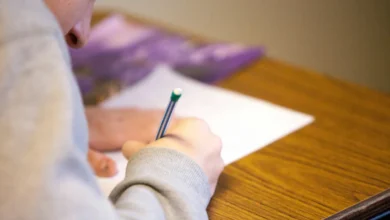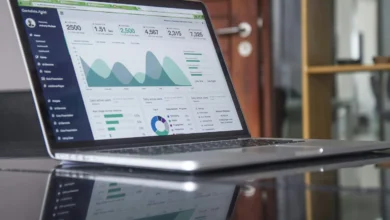What Does the Department of Education Do? Roles & Functions

The Department of Education (ED) plays a crucial role in shaping the educational landscape of the United States. Its mission is to promote student achievement and ensure equal access to quality education for all students, regardless of their socioeconomic background or ability. The ED works closely with state and local governments, educational institutions, and other organizations to establish and enforce educational policies, distribute federal funding, and monitor academic performance. This governmental body is responsible for addressing some of the most pressing issues in education, including funding disparities, accessibility for students with disabilities, and teacher shortages. By focusing on a broad spectrum of initiatives, the Department of Education works tirelessly to create an equitable and effective education system for all Americans.
The functions and roles of the Department of Education extend beyond just administering educational policies. It is tasked with ensuring that federal funds are allocated appropriately, developing programs that support both students and teachers, and conducting vital research that helps improve education standards across the country. Through its various offices and divisions, the ED provides funding for K-12 schools, higher education institutions, and special education programs. It also manages financial aid systems, such as Pell Grants and student loans, that help make education more affordable for students. As one of the key government agencies, the Department of Education is integral to addressing the evolving needs of the education system in a constantly changing world.
Overview of the Department of Education
The Department of Education is responsible for overseeing public education at all levels, from elementary school to postsecondary institutions. Its core mission is to promote student achievement and foster educational excellence across the United States. The ED works to ensure equal access to education, eliminate educational disparities, and strengthen educational systems.
The Department was created in 1980 to ensure that federal funds were used efficiently in educational systems across the nation. Today, the Department plays a central role in administering federal education programs, providing grants, conducting research, and ensuring schools comply with educational policies and regulations.
Key Roles and Functions of the Department of Education
The roles and functions of the Department of Education can be broadly categorized into several major areas:
- Policy Development and Implementation The Department is responsible for shaping educational policies and implementing them across the country. It establishes educational guidelines for states, local governments, and schools to follow. These policies encompass various aspects of education, including academic standards, curriculum design, teacher training, and student assessments.
- Grant Distribution One of the most critical functions of the Department of Education is the distribution of federal funds. The ED allocates billions of dollars annually to support K-12 education, higher education, special education, and other areas. These funds are aimed at improving educational outcomes, supporting low-income students, and enhancing educational infrastructure.
- Research and Data Collection The department conducts and supports educational research and data collection to inform decision-making and policy development. It works closely with other federal agencies, academic institutions, and think tanks to gather data on student performance, school effectiveness, and educational trends.
- Education Standards and Accountability The ED is responsible for setting standards for educational achievement and ensuring schools meet these standards. The Department monitors and evaluates student performance across the nation to determine whether schools are meeting academic requirements. It also holds schools accountable for providing quality education, with particular emphasis on underserved and disadvantaged students.
- Student and Teacher Support The Department provides numerous services to both students and teachers. For students, this includes financial aid programs like Pell Grants and student loans. For teachers, the ED offers professional development opportunities, resources, and grants to enhance their teaching capabilities.
Key Functions of the Department of Education
| Function | Description |
| Policy Development | Creating and implementing educational policies that affect K-12, higher education, and special education systems. |
| Grant Distribution | Allocating federal funding to schools, teachers, and students through various programs, including Title I, Pell Grants, and other initiatives. |
| Research and Data Collection | Conducting research on education trends, student achievement, and school performance to inform policymaking. |
| Education Standards & Accountability | Establishing academic standards for student performance and ensuring that schools meet these standards. |
| Student and Teacher Support | Offering financial aid to students and providing teachers with professional development resources to improve educational outcomes. |
Structure of the Department of Education
The Department of Education is led by the Secretary of Education, who is appointed by the President of the United States. The Secretary is the head of the ED and is responsible for carrying out the policies and overseeing the activities of the department. Below the Secretary are various offices and divisions that focus on specific areas of education, such as early childhood education, elementary and secondary education, postsecondary education, and special education.
The Department is organized into various offices, including:
- Office of Elementary and Secondary Education: Focuses on K-12 education and related programs.
- Students with disabilities are supported by the Office of Special Education and Rehabilitative Services.
- Office of Postsecondary Education: Deals with higher education, including grants and scholarships.
- Office of Federal Student Aid: Administers federal financial aid programs like grants, loans, and work-study.
- Office for Civil Rights: Ensures that educational institutions comply with civil rights laws, ensuring equal access for all students.
Key Educational Programs Managed by the Department of Education
The Department of Education oversees a variety of programs that directly impact students and educators. These programs aim to improve access to education, ensure high-quality instruction, and provide financial support for students.
K-12 Education Programs
The ED manages several major programs at the K-12 level, including:
- Title I Funding: Aimed at helping schools with a high percentage of students from low-income families.
- School Improvement Grants (SIG): Support for schools that are identified as low-performing.
- Special Education Grants: Funding for programs serving students with disabilities.
Higher Education Programs
The Department administers various programs to ensure that students can afford higher education and institutions can offer quality education. Some of the most well-known programs include:
- Pell Grants: Low-income undergraduate students can get financial aid through this government grant program.
- Federal Work-Study: Offers graduate and undergraduate students in need of financial assistance part-time jobs.
- Federal Student Loans: The ED provides low-interest loans for students pursuing higher education.
Special Education and Rehabilitation Services
The Department ensures that students with disabilities have access to quality education through:
- Individuals with Disabilities Education Act (IDEA): A federal law that ensures students with disabilities receive a Free Appropriate Public Education (FAPE).
- Rehabilitation Services: Programs designed to assist individuals with disabilities in becoming employed and independent.
Postsecondary Education and Career Education
The ED also promotes career and technical education programs that help students gain the skills necessary to succeed in the workforce. These programs are particularly important for students who may not pursue a traditional four-year college degree.
Challenges and Issues Facing the Department of Education
Despite its essential role, the Department of Education faces several challenges:
- Funding Inequality: There is a significant gap in funding between schools serving affluent students and those serving low-income students.
- Educational Equity: Ensuring that all students, regardless of their background or circumstances, have access to high-quality education remains an ongoing issue.
- Teacher Shortages: Across many states, there is a shortage of qualified teachers, particularly in subjects like math, science, and special education.
- Standardized Testing: The reliance on standardized tests to assess student performance has been criticized for failing to capture the full picture of a student’s abilities.
Key Educational Programs
| Program | Target Group | Objective |
| Title I Funding | Low-income students | To improve the academic achievement of disadvantaged students. |
| Pell Grants | Undergraduate students with financial need | To provide financial assistance to low-income students for higher education. |
| School Improvement Grants (SIG) | Low-performing schools | To help improve the performance of schools in need of major academic and operational changes. |
| Special Education Grants | Students with disabilities | To provide funding for special education programs and services. |
| Federal Student Loans | College students | To offer low-interest loans to students for higher education expenses. |
The Future of the Department of Education
The future of the Department of Education will likely involve continued efforts to address educational inequalities, promote innovative teaching methods, and ensure that education is adaptable to the needs of the 21st century. With the increasing integration of technology in classrooms, the Department is focusing on expanding digital learning opportunities and improving the accessibility of education for all students.
Additionally, reforms in higher education funding, student loan forgiveness, and college affordability will continue to be a central focus. The Department will also play a critical role in shaping policies around workforce development, ensuring that education aligns with the evolving job market demands.
Wrapping Up
Department of Education plays a foundational role in shaping and overseeing the educational system in the United States. Its efforts to create fair and effective educational policies, distribute federal resources, and promote student success are central to the future of education. Through its comprehensive programs and initiatives, the ED works to ensure that all students, from early childhood to higher education, have access to the tools and opportunities necessary for academic success. Despite the challenges it faces—such as funding inequities and educational disparities—the Department’s commitment to promoting equity and excellence in education remains steadfast. Looking ahead, the Department of Education will continue to play a pivotal role in addressing the evolving educational needs of the nation, striving to create a more inclusive, accessible, and high-quality education system for all.
FAQs
What is the Department of Education’s primary goal?
The main purpose of the Department of Education is to promote student achievement and foster educational excellence across the United States. It works to ensure equal access to education and eliminate educational disparities.
How does the Department of Education support students?
The Department of Education supports students by providing financial aid programs like Pell Grants and student loans. It also works to improve educational standards and ensure that schools offer quality instruction.
What types of programs does the Department of Education fund?
The Department of Education funds various programs, including Title I funding for low-income students, Pell Grants for college students, special education programs, and school improvement initiatives.
How does the Department of Education work with state and local governments?
The Department of Education collaborates with state and local governments to implement federal education policies. It distributes federal funds to states and monitors their adherence to educational standards.
What challenges does the Department of Education face?
The Department of Education faces challenges such as funding inequality, educational equity, teacher shortages, and the reliance on standardized testing to assess student performance.




